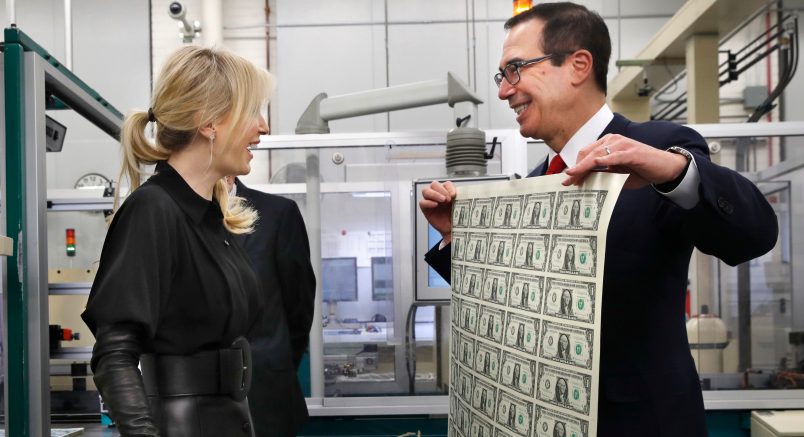When the House and Senate passed different versions of a bill to slash corporate tax rates and eliminate the deductions millions of people depend upon, GOP lawmakers insisted that the bill would pay for itself and then some. They presented no evidence to back up this claim, and multiple reports from government experts and outside groups found instead that the bills would increase the federal deficit by at least $1 trillion.
The Treasury Department promised to release an analysis ahead of last week’s Senate vote, but it was nowhere to be seen, and whistleblowers at the Department told the New York Times they were never even instructed to crunch the numbers. On Monday, after the department’s inspector general opened an investigation into the whereabouts of the promised report and whether Secretary Steve Mnuchin was attempting to mislead the public about the impact of the tax plan, the Treasury Department quietly released a one-page document.
Treasury’s quickie analysis is basically in agreement with other respected assessments of what the tax cuts will do to the deficit absent economic growth: reduce tax revenue by $1 trillion. But the Treasury analysis accepts as a given the White House’s projection for 2.9 percent economic growth over 10 years, which turns that $1 trillion addition to the deficit into a $300 billion net gain in government revenue. But even the rosy Treasury analysis conceded that the tax cuts alone will not spur this growth.
Instead, the report says the tax cuts “as well as from a combination of regulatory reform, infrastructure development, and welfare reform as proposed in the Administration’s Fiscal Year 2018 budget” will do the trick. Exactly what those “reforms” will entail is not described, but the reference to Trump’s 2018 budget is telling. That budget—which even Republicans staunchly opposed—would have gutted the State Department, public schools, the Coast Guard, and nearly every single federal agency and program that helps low-income people. This spring, the GOP-controlled Congress ignored this budget, and passed a temporary one that maintained and in several areas increased the funding for programs Trump aimed to cut.
So, essentially, Treasury is saying that corporate tax cuts, plus a budget Congress will never pass that defunds Meals on Wheels etc., will save the government money in the long run.
The new Treasury report also uses economic growth estimates that the White House put out before the tax bill was even drafted. They’re estimating 2.9 percent growth every year for the next 10 years, while the non-partisan but GOP-led Congressional Budget Office says 1.9 percent is much more realistic.
Read the full report below:











The cat is out of the bag, but I feel certain this will be ignored by most other news outlets. Just one more reason I read TPM and am a proud Prime member. Thanks, Josh and your team.
Nice young couple picked out their new wall paper.
… so not a problem …they will just have to cut social security and medicare … & non-business related aid for disasters - people should help themselves!
Ruining plans by blurting out the truth early is a privilege afforded only to the Trump family, Mnuchin.
Like The People’s Temple, Heaven’s Gate and The Branch Davidians, the Republican’t Party is a dangerous, quasi-religious Death Cult. They would rather physically die than admit that their beliefs are false…